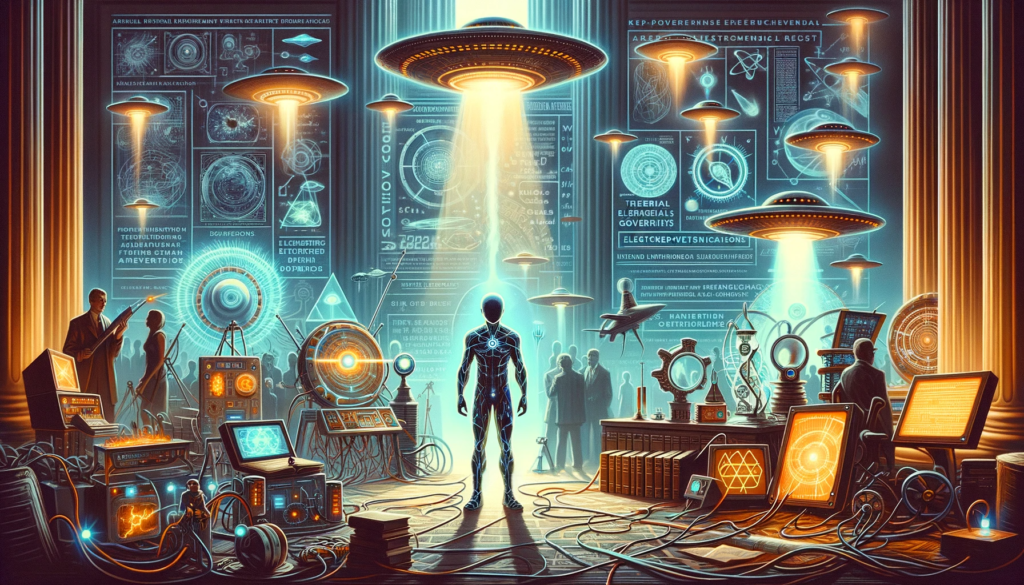Stan Deyo

Stan Deyo stands as a compelling figure with his accounts, steeped in mystery and controversy into the depths of advanced technology, antigravity, UFO phenomena, and government secrecy. Deyo’s narrative paints a picture of a world where groundbreaking scientific discoveries are shrouded in layers of classified information, and where the line between reality and speculation blurs.
Stan Deyo’s journey into the world of advanced technology began at the United States Air Force Academy in the early 1960s. Here, Deyo claims to have been part of a special government program, which exposed him to rapid subliminal learning processes. This unorthodox training method allegedly involved the flashing of information at high speeds, embedding a wealth of knowledge directly into the subconscious minds of the trainees. The content of this information, which Deyo later struggled to consciously recall, hinted at highly classified topics, laying the foundation for his future explorations into the unknown.
Explorations in Electrogravitics
Deyo’s fascination with electrogravitics, a field that purportedly merges electricity and gravity, marked a significant chapter in his career. He believed that he had independently cracked the code to antigravity, a discovery he initially thought to be his alone. However, his private research caught the attention of the U.S. government, revealing to him that he was not alone in this endeavor. Governmental figures, including Dr. James R. Maxfield and Dr. Edward Teller, were deeply involved in similar research, working on projects that could potentially revolutionize our understanding of gravity and energy.
Amidst mounting pressures, including his compromised position as an FBI informant and the potential dangers he faced, Deyo relocated to Australia. In this new setting, he continued his research, further looking into the mysteries of antigravity and its implications. His work in Australia, however, was not free from the shadows of government interest and intervention.
One of the most striking aspects of Deyo’s claims revolves around the existence of flying saucers and similar high-speed electric aircraft. He asserts that such technologies have been developed not only by the United States but by other countries as well. The secrecy surrounding these projects, according to Deyo, is due to the potential misuse of the technology and the disruptive socio-economic impact it could have. He suggests that these advanced crafts, which defy conventional understanding, are a reality, kept hidden from public view under layers of classified information.
Deyo’s narrative is concerned over the ethical implications of such secrecy. The potential misuse of advanced technology by governments or powerful groups is a recurring theme in his accounts. He questions the morality behind keeping such groundbreaking discoveries away from public knowledge, highlighting the complex interplay between scientific advancement, political power, and ethical responsibility.
Stan Deyo’s discussions about advanced technology, particularly regarding Magneto Hydrodynamic (MHD) plasma and its applications, reveal his deep dive into the realms of theoretical physics and energy research. MHD plasma, as described by Deyo, is akin to ball lightning – a self-contained, highly energized plasma capable of maintaining its form. This concept aligns with advanced plasma physics, where plasma, being an ionized gas, can be controlled and contained through magnetic fields. Deyo suggested that this MHD plasma could revolutionize energy storage and management. He envisioned it as a method to store and convert electricity into a high-voltage battery form. This idea, if feasible, could have significant implications for energy efficiency and distribution, proposing a novel approach to storing and harnessing energy in a compact, controlled plasma state.
Another intriguing aspect of Deyo’s claims involves Pine Gap, a facility in Australia, which he associated with the development of innovative propulsion technology. Deyo speculated that Pine Gap could function as a broadcasting station for electromagnetic propulsion, hinting at a method of transmitting power wirelessly. This concept echoes Nikola Tesla’s early 20th-century experiments with wireless electricity transmission. Deyo proposed that such a facility could transmit electrical power, like a radio station transmits signals, allowing receivers tuned to the right frequency – whether they be cars, submarines, or aircraft – to draw power directly from the broadcast signal. This method of power distribution would fundamentally change the way energy is delivered, moving away from traditional, grid-bound electricity to a more flexible, wireless system. Although Deyo’s ideas seem futuristic, they touch upon real scientific principles and ongoing research in electromagnetic field manipulation and wireless energy transmission.
Stan Deyo’s narrative is a mosaic of advanced scientific concepts, clandestine governmental operations, and unexplained phenomena. His accounts, while often bordering on the incredulous, compel us to question our understanding of the world and the hidden forces that may operate within it.

